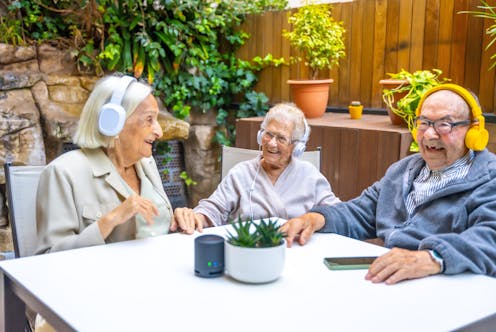Introduction
Art therapy has long been recognized as a powerful tool for promoting mental health and well-being. Through the creative process of making art, individuals are able to express their emotions, reduce stress, and gain a sense of control and empowerment. In recent years, the field of art therapy has evolved to incorporate technology, giving rise to the concept of virtual art therapy. This innovative approach combines the benefits of traditional art therapy with the convenience and accessibility of virtual platforms. In this article, we will explore the benefits of art therapy for mental health and delve into the world of virtual art therapy.
Understanding the Benefits of Art Therapy for Mental Health
Art therapy is a form of psychotherapy that utilizes the creative process of making art to improve mental health and well-being. It is based on the belief that the act of creating art can help individuals explore their emotions, reduce stress, and gain insight into their thoughts and feelings. Through the use of various art materials and techniques, individuals are able to express themselves in a non-verbal way, allowing for a deeper exploration of their inner world.
The benefits of art therapy for mental health are numerous. Research has shown that engaging in art therapy can reduce symptoms of anxiety and depression, improve self-esteem and self-awareness, and enhance overall quality of life. The creative process of making art can be a cathartic and empowering experience, allowing individuals to release pent-up emotions and gain a sense of control over their thoughts and feelings. Additionally, art therapy can provide a safe and supportive environment for individuals to explore and process traumatic experiences.
The Role of Virtual Art Therapy in the Age of Technology
Virtual art therapy is a relatively new concept that combines the benefits of traditional art therapy with the convenience and accessibility of virtual platforms. With the advancements in technology, individuals can now engage in art therapy sessions from the comfort of their own homes, using virtual platforms such as video conferencing or online art therapy programs. This allows for greater flexibility and convenience, particularly for individuals who may have difficulty accessing traditional in-person art therapy sessions.
Technology has had a profound impact on mental health treatment, making it more accessible and convenient for individuals to receive the care they need. Virtual art therapy is just one example of how technology is being used to improve mental health outcomes. By utilizing virtual platforms, individuals can engage in art therapy sessions from anywhere in the world, eliminating the barriers of time and distance. This is particularly beneficial for individuals who live in remote areas or have limited access to mental health services.
How Virtual Art Therapy Can Help Alleviate Stress and Anxiety
Stress and anxiety are common mental health challenges that many individuals face on a daily basis. Virtual art therapy can be a powerful tool for alleviating these symptoms and promoting relaxation and well-being. The act of creating art can help individuals focus their attention and distract from anxious thoughts and worries. Additionally, the repetitive and rhythmic movements involved in art-making can activate the body’s relaxation response, reducing stress and promoting a sense of calm.
There are several techniques used in virtual art therapy for stress and anxiety. One technique is mindfulness-based art therapy, which combines the principles of mindfulness with the creative process of making art. This involves focusing on the present moment and engaging in the art-making process with a non-judgmental and accepting attitude. Another technique is expressive art therapy, which encourages individuals to freely express their emotions through art. This can be particularly beneficial for individuals who have difficulty verbalizing their feelings.
The Science Behind Art Therapy: How it Affects the Brain
Art therapy has been shown to have a profound impact on the brain, affecting various areas involved in emotion regulation, self-expression, and creativity. When individuals engage in art therapy, the brain releases endorphins, which are natural chemicals that promote feelings of pleasure and well-being. This can help reduce symptoms of anxiety and depression and improve overall mood.
Research has also shown that art therapy can increase connectivity between different areas of the brain, promoting integration and coherence. This can enhance cognitive functioning and improve overall mental health. Additionally, art therapy has been found to increase the production of dopamine, a neurotransmitter that is associated with motivation and reward. This can help individuals feel a sense of accomplishment and satisfaction when engaging in the creative process of making art.
Exploring the Different Forms of Virtual Art Therapy
There are several different types of virtual art therapy, each with its own unique approach and techniques. One form of virtual art therapy is individual virtual art therapy, where individuals work one-on-one with a virtual art therapist. This allows for personalized and tailored sessions that address the specific needs and goals of the individual. Another form is group virtual art therapy, where individuals participate in art therapy sessions with others who are facing similar challenges. This can provide a sense of community and support, as individuals can share their experiences and learn from one another.
Virtual art therapy can also take the form of online art therapy programs, where individuals can access pre-recorded art therapy sessions or engage in interactive art-making activities. These programs often include guided instructions and prompts to help individuals explore their emotions and express themselves through art. This can be particularly beneficial for individuals who prefer to work at their own pace or have limited access to in-person art therapy sessions.
Overcoming Mental Health Challenges with Virtual Art Therapy
Virtual art therapy can be a valuable tool for overcoming a wide range of mental health challenges. It can help individuals cope with trauma, manage symptoms of anxiety and depression, and improve overall well-being. The creative process of making art allows individuals to express and process their emotions in a safe and supportive environment. This can be particularly beneficial for individuals who have difficulty verbalizing their feelings or who may feel overwhelmed by traditional talk therapy.
Virtual art therapy can be tailored to individual needs, allowing for a personalized and flexible approach to treatment. Art therapists can work with individuals to identify their goals and develop a treatment plan that addresses their specific needs. This can include exploring different art materials and techniques, setting goals for art-making, and reflecting on the artwork created. By tailoring the therapy to the individual, virtual art therapy can provide a more holistic and comprehensive approach to mental health treatment.
The Accessibility of Virtual Art Therapy: Reaching More People in Need
One of the major advantages of virtual art therapy is its accessibility. Traditional art therapy sessions often require individuals to travel to a physical location, which can be a barrier for individuals who live in remote areas or have limited access to transportation. Virtual art therapy eliminates these barriers, allowing individuals to engage in therapy sessions from the comfort of their own homes. This can be particularly beneficial for individuals with physical disabilities or chronic illnesses that make it difficult to leave their homes.
Virtual art therapy also provides greater flexibility and convenience for individuals with busy schedules or other commitments. With virtual platforms, individuals can schedule therapy sessions at a time that works best for them, without having to worry about travel time or other logistical considerations. This can make it easier for individuals to prioritize their mental health and engage in regular therapy sessions.
The Future of Mental Health Treatment: Integrating Virtual Art Therapy
As technology continues to advance, virtual art therapy is likely to play an increasingly important role in mental health treatment. The convenience and accessibility of virtual platforms make it an attractive option for individuals seeking mental health support. Virtual art therapy can be integrated into existing mental health treatment programs, providing individuals with a holistic and comprehensive approach to care.
By integrating virtual art therapy into mental health treatment, individuals can benefit from the unique advantages of both traditional art therapy and virtual platforms. They can engage in the creative process of making art while also accessing the convenience and flexibility of virtual platforms. This can enhance the overall effectiveness of mental health treatment and improve outcomes for individuals.
The Importance of Qualified Art Therapists in Virtual Therapy Sessions
While virtual art therapy offers many benefits, it is important to note that the presence of a qualified art therapist is crucial for the success of therapy sessions. Art therapists are trained professionals who have expertise in both art and psychology. They are able to guide individuals through the art-making process, provide support and feedback, and help individuals gain insight into their thoughts and feelings.
In virtual therapy sessions, art therapists play a vital role in creating a safe and supportive environment for individuals to explore their emotions and express themselves through art. They can provide guidance and structure to the art-making process, helping individuals to set goals and reflect on their artwork. Additionally, art therapists can help individuals interpret their artwork and gain insight into their thoughts and feelings.
Real-Life Success Stories: How Virtual Art Therapy Has Improved Mental Health
There are many real-life success stories that highlight the positive impact of virtual art therapy on mental health. One such story is that of Sarah, a young woman who struggled with anxiety and depression. Through virtual art therapy, Sarah was able to explore her emotions and express herself in a non-verbal way. She found that the act of creating art helped her to relax and reduce her anxiety. Over time, Sarah gained a sense of control and empowerment, and her overall mental health improved.
Another success story is that of John, a military veteran who experienced post-traumatic stress disorder (PTSD). John found it difficult to talk about his traumatic experiences, but through virtual art therapy, he was able to express his emotions and process his trauma. The act of creating art allowed John to externalize his thoughts and feelings, making them more manageable. With the support of his virtual art therapist, John was able to gain a sense of closure and move forward in his healing journey.
Conclusion
Virtual art therapy is an innovative approach to mental health treatment that combines the benefits of traditional art therapy with the convenience and accessibility of virtual platforms. Through the creative process of making art, individuals can express their emotions, reduce stress, and gain a sense of control and empowerment. Virtual art therapy can be a valuable tool for alleviating stress and anxiety, promoting relaxation and well-being, and overcoming a wide range of mental health challenges.
As technology continues to advance, virtual art therapy is likely to play an increasingly important role in mental health treatment. It offers greater accessibility and convenience, allowing individuals to engage in therapy sessions from anywhere in the world. However, it is important to note that the presence of a qualified art therapist is crucial for the success of virtual therapy sessions. Art therapists are trained professionals who can provide guidance and support, helping individuals to gain insight into their thoughts and feelings.
In conclusion, virtual art therapy is a powerful tool for promoting mental health and well-being. It offers numerous benefits and can be tailored to individual needs, providing a holistic and comprehensive approach to mental health treatment. Individuals who are seeking mental health support should consider virtual art therapy as a treatment option, as it can provide a safe and supportive environment for exploring emotions and expressing oneself through art.
Find out how Torongo Therapyplus can help you with your needs. Get in touch with us at smile@torongo.life, or call us on 02 8809 9965.































